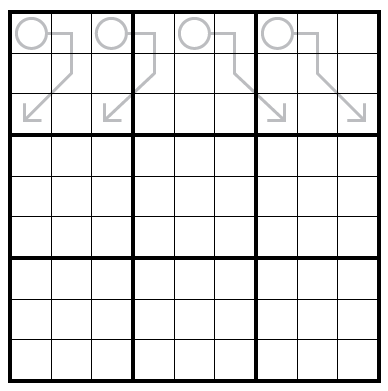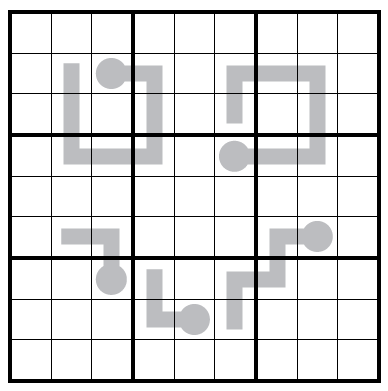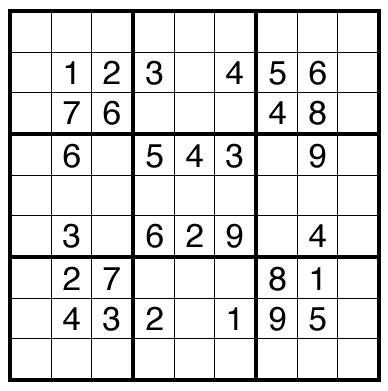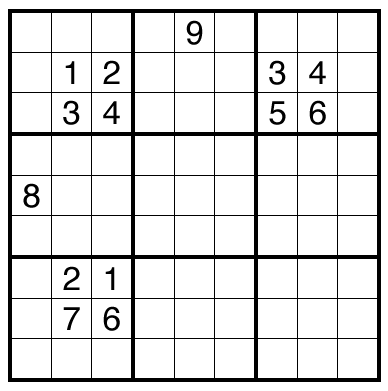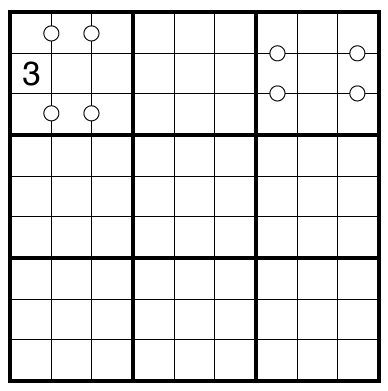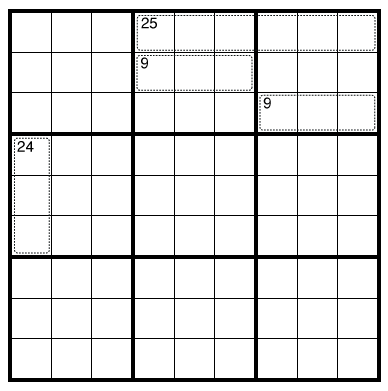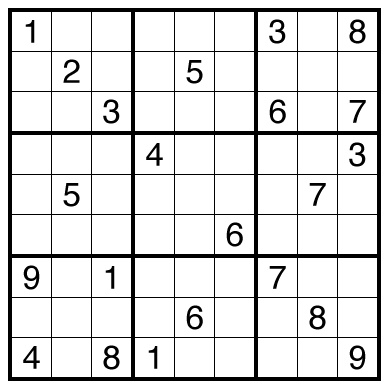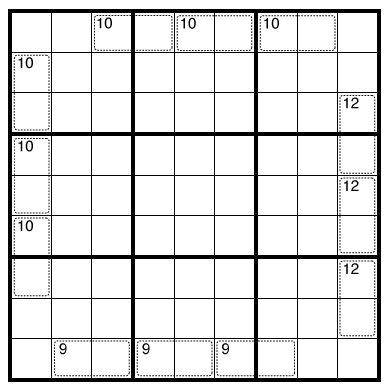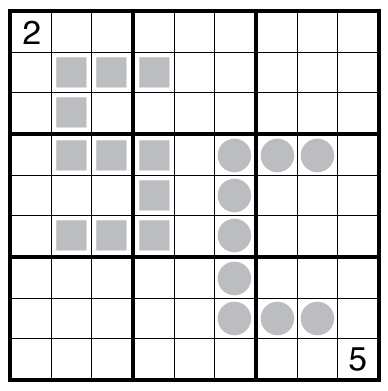Just One Cell Kropki Pairs Sudoku by Clover
This is the last of three puzzles today, completing the Finals puzzle set.
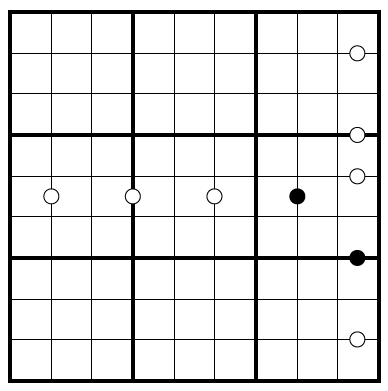
or solve online in Penpa, or also solve online in SudokuPad as a new option (note: highly recommended to turn off “Mark Solved Digits” option if you use that in SudokuPad).
Author/Opus: This is the 21st puzzle from guest contributor Clover.
Rules: This Sudoku does not have a unique solution for the full grid (it actually has a large number of solutions), but there is exactly one cell in which a number can be logically placed that is fixed across all solutions. Find this cell and its unique value.
This puzzle follows Kropki Pairs Sudoku rules, so no number repeats in any row, column, or bold region. If a white circle is given between two adjacent cells, then the two numbers in those cells must differ by 1. If a black circle is given between two adjacent cells, then the two numbers must have a ratio of 2. Pairs of cells without circles can have any relationship.
Time Standards: This competition had 1-point (easy), 2-point (medium), 3-point (hard), or higher value puzzles. This would have been worth 3 points (medium category), roughly 2.5-3 minute target.
Solution: PDF
Note: Follow this link for other Just One Cell Sudoku.
Note 2: Comments on the blog are great! For a more interactive discussion, please also consider using our Just One Cell Sudoku Discussion post on the GMPuzzles Discord. Not a member of the Discord? Click this link for basic access.

